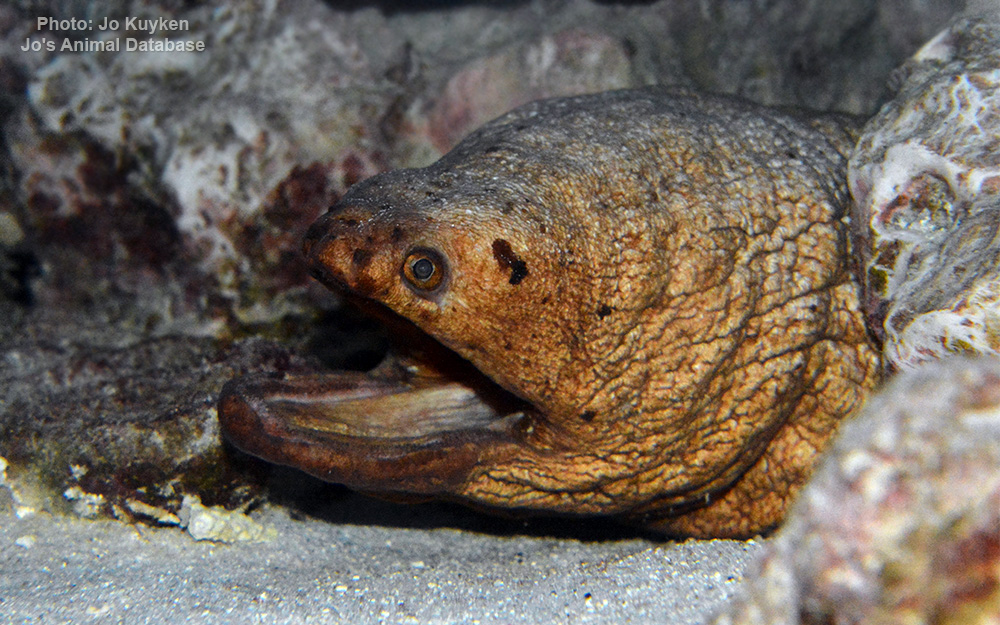Broadbanded moray
(Channomuraena vittata)

Image source: Jo's Animal Database
Classification
General data
Channomuraena vittata is a rare species of moray eel from the Anguiliformes order found in reefs. It is commonly known as the broadbanded moray, banded moray, Chinese moray, double-ended moray, or the long-jawed moray.
The broadbanded moray is a large, thick, muscular moray that can grow up to 150 cm in length, although its common length is 80 cm.
The fins are confined to the posterior part of the tail, which is short and lacks pectoral and pelvic fins. It has no scales and produces a mucus over its thick skin. It has rather small eyes positioned at the end of the short snout. It has numerous and short, sharp teeth inserted into a large and profound jaw that extends back into the head. In addition, there is a second jaw, the pharyngeal jaw located further down the throat, used to capture and transport the prey into the throat. It possesses a posterior nostril in short tube. It has gills positioned far back behind the head. Its anus is located at the posterior third of the total length of its body.
The distinctive features are the small cranium, the anterior position of the eyes, an enlarged lower jaw that projects beyond upper jaw and 13 to 16 dark bars or bands throughout the body.
Only native cases have been found, so it is not invasive to anywhere.
Atlantic Ocean: Ascension Island, the Cape Verde Islands, Annobon Island, and Sao Tome Island, Bermuda, the Bahamas, in the Gulf of Mexico from northwestern Cuba, in the Caribbean from Mona Island, Puerto Rico to St. Vincent, Colombia, Curaçao to Margarita Island, St. Pauls Rocks and Brazil (Bahia).
Indo-pacific: Reunion and Mauritius and Christmas Island, Palau, and the Hawaiian Islands, Kiribati Island, Palmyra Island, Micronesia (Pohnpei), Indonesia (Bali).










